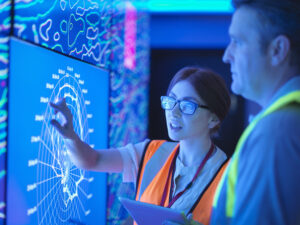
Collaborative Commerce and the Democratization of Retail
Consumers used to be retailers’ marionettes. Now it’s the shoppers pulling the strings.
What’s changed the retail/brand/shopper paradigm is that every conceivable product and service can be found on a smartphone. Seemingly all of a sudden, consumers hold the keys to the stock room of every retailer, unlocked by the mini computers in their pocket. And the sea of sameness is numbing.
If we had to pinpoint the tech innovations that helped plant the seeds of personalization and collaborative commerce, Amazon’s customer recommendation engine and product review features would be it.
The e-tailer pioneered the “if you bought that, you might like this,” feature, suggesting complementary products to shoppers based on their buying behavior, defining a standard of personalized interactions that shoppers have come to expect from both online and brick-and-mortar stores.
Meanwhile, the etailer’s customer review feature granted shoppers a voice like never before, signaling the rise of the empowered, collaborative consumer.
The upshot is that now consumers are often more savvy about merchandise than store’s sales staff, as a hefty seven in ten U.S. shoppers research products online, before entering a store—so you better offer them something more.
Today, collaborative commerce means knowing the wants and needs of individual shoppers and making them feel seen.
The shift has set the stage for the emergence of crowdsourced fashion from ModCloth.com, whereby shoppers vote on what designs get produced; 3D-printed, personalized products at Converse and Lowe’s; and apps like L’Oreal Genius, which recognizes one’s facial characteristics for a virtual makeup try-on session.
It all amounts to mass customization emerging on a continuum, as retailers collect data points from shoppers’ physical and digital footprints along the way.
And it extends to how retailers are heightening shopper engagement in-store with digital technology designed to create newly immersive and customized brick-and-mortar moments.
Offering a “customer-first” service experience these days means delivering personalization at scale, according to PSFK.
Quick Study: The Lowe’s Hologram Experience
Retailers are increasingly experimenting with virtual reality to do just that, as well as offer in-person services and experiences that can’t be duplicated online.
Lowe’s, for one, is testing Microsoft’s HoloLens in a handful of stores, a mixed-reality headset that allows consumers to see virtual objects as if they were part of the real world.
It gives the home-improvement chain’s shoppers the ability to visualize a mock kitchen prior to making a final selection, sans swatches or samples. They can view a full-sized holographic kitchen that they can then customize—from changing cabinet styles, sizes and colors to tweaking the scale of an island—before making a final decision.
The technology utilizes Microsoft’s Cortana Intelligence Suite to analyze customers’ Pinterest boards and make design recommendations, and deliver real-time feedback back to Lowe’s.
It’s a partnership that reflects digital technology enhancing the in-store experience, while enabling shopper personalization via analytics.
“Foot traffic continues to fall, and stores need to find a way to make the in-store shopping experience better,” said Yoram Wurmser, an analyst with digital research firm eMarketer. “Personalization of the shopping experience is a big theme and crucial for brick and mortar retailers to compete with online.”
And while retailers are working to personalize the shopper experience via things like clienteling apps for store associates, “Lowe’s’ HoloLens test takes this to the next level,” he said. “Its bigger significance lies in how it brings augmented or enhanced reality to another level,” which heightens engagement.
You can see for yourself in the below video.
In my next article on digital transformation within the industry, I’ll talk about incubating innovation and the rise of retail innovation labs among other things in the spirit of digital disruption. In the meantime, you can also access our new Microsoft resource on transforming retail for the digital age.
LinkedIn: Tracy Issel




